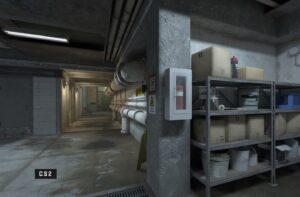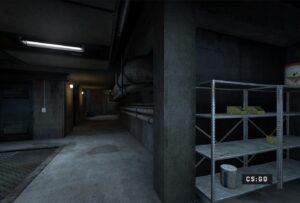Counter-Strike: Global Offensive (CS:GO) is a team-based tactical first-person shooter released by Valve in 2012. It is an installment of the Counter-Strike series, which began in 1999 as a mod of Valve’s Half-Life. Despite its decade-long history, it has remained one of the most popular games worldwide, continually breaking all-time high concurrent player records. Recently, a large-scale update titled Counter-Strike 2 has been announced, set to replace CS:GO by Summer 2023. This blog post will identify the mechanics, aesthetics, and dynamics of CS:GO and what changes/stays the same in the transition to CS:2.
The mechanics, defined as the “various actions, behaviors and control mechanisms afforded to the player within a game context” (Hunicke, LeBlanc, and Zubek), are a crucial element to distinguishing CS:GO from other first-person shooters. The shooting and movement of the game are very basic: left-click to fire, right-click for secondary actions, and WASD to move; aiming is done with a mouse; various grenades can be thrown. What sets CS:GO’s mechanics apart are the skill and practice required to master them. For instance, a player must stand still for an accurate shot, but must obviously move on the map to gain a tactically advantageous position. To achieve both, the player must execute a counter-strafe maneuver in order to stop quickly and land an accurate shot. Further, the movement itself is unique to Counter-Strike; built on the aging Source engine, certain quirks (such as bunny-hopping) are possible despite not being explicit features. In CS:2, the game will be ported to the Source 2 engine, which will alter movement, among many things. Despite this, from my own experience in the beta, it is still largely similar and feels faithful to Counter-Strike.
The aesthetic model of CS:GO is described in many ways. It is shaped by the dynamic of the game: a time-constrained bomb defusal gamemode on a map with two bombsites and two team spawns. The Terrorists side attempts to plant the bomb in either of the sites. If successful, the Counter-terrorists must defuse the bomb to win the round. In short, the Terrorists can win via the following outcomes:
- The Terrorists defeat all the Counter-terrorists before the round timer expires (~2 min).
- The Terrorists plant the bomb and it detonates after 40 seconds.
The Counter-terrorists win with these possibilities:
- The Counter-terrorists defeat all the Terrorists before the bomb is planted.
- The Counter-terrorists defuse the bomb after it has been planted.
- The round timer expires and there is at least one Counter-terrorist alive.
A classic match consists of a best-of-30, with a side switch after round 15.
As such, the aesthetics of Counter-Strike are Challenge, Fellowship, and possibly Discovery, Submission, and Sensation. None of these things should change with CS:2; the fundamental aspects of the game will remain the same, with most of the changes being visual, mechanical, or quality-of-life.





